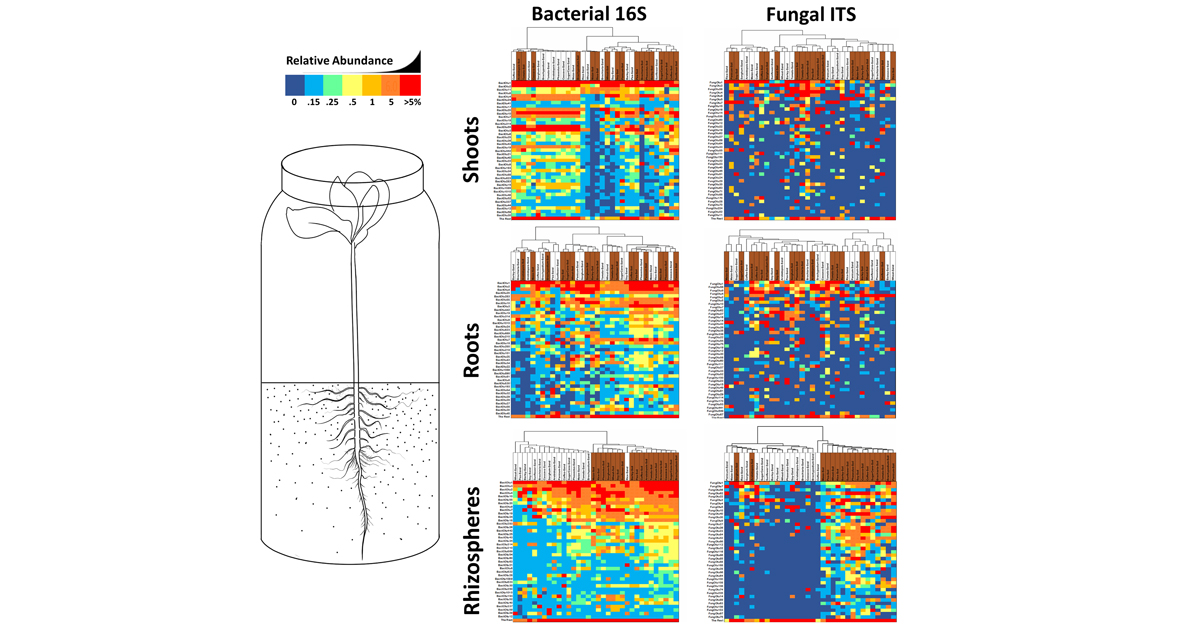Ecology of Crop-Associated Communities of Bacteria and Fungi
A special issue of Diversity (ISSN 1424-2818). This special issue belongs to the section "Microbial Diversity and Culture Collections".
Deadline for manuscript submissions: closed (19 November 2021) | Viewed by 14438

Special Issue Editors
2. Max Planck Institute for Plant Breeding Research, Cologne, Germany
Interests: microbial ecology; soil microbiology; plant microbiomes; agricultural biotechnology; agroecology
Special Issues, Collections and Topics in MDPI journals
Special Issue Information
Dear Colleagues,
Plants co-evolved with an impressive diversity of microorganisms that help stimulate their hosts to grow and resist stress, aid in nutrient acquisition, and control pathogens. Advances in molecular and systems biology have empowered the study of these complex microbial networks, providing valuable reference tools for our development of agroecological biotechnologies to help address the grand challenges facing humanity, such as food security, food safety, and environmental sustainability. This Special Issue provides a platform to highlight new research that adds to our knowledge of the microbiology of crop plants, especially as it relates to: i) the dynamics, distribution, and diversity of bacteria and fungi on or inside crop plants; ii) the effect of agricultural practices (e.g., fertilization, pesticide use, planting method, etc.) or environmental variation (e.g., soil type, moisture levels, temperature) on plant microbiomes; iii) the provenance of plant-inhabiting bacteria and fungi; iv) the use of plant microbiome data to diagnose plant health or guide bioprospecting for beneficial microbes; and/or v) the loss (and reintroduction) of beneficial microbes in modern agriculture. We look forward to reading your submissions.
Dr. David Johnston-Monje
Dr. Alejandro Caro-Quintero
Guest Editors
Manuscript Submission Information
Manuscripts should be submitted online at www.mdpi.com by registering and logging in to this website. Once you are registered, click here to go to the submission form. Manuscripts can be submitted until the deadline. All submissions that pass pre-check are peer-reviewed. Accepted papers will be published continuously in the journal (as soon as accepted) and will be listed together on the special issue website. Research articles, review articles as well as short communications are invited. For planned papers, a title and short abstract (about 100 words) can be sent to the Editorial Office for announcement on this website.
Submitted manuscripts should not have been published previously, nor be under consideration for publication elsewhere (except conference proceedings papers). All manuscripts are thoroughly refereed through a single-blind peer-review process. A guide for authors and other relevant information for submission of manuscripts is available on the Instructions for Authors page. Diversity is an international peer-reviewed open access monthly journal published by MDPI.
Please visit the Instructions for Authors page before submitting a manuscript. The Article Processing Charge (APC) for publication in this open access journal is 2100 CHF (Swiss Francs). Submitted papers should be well formatted and use good English. Authors may use MDPI's English editing service prior to publication or during author revisions.
Keywords
- phytobiome
- rhizosphere
- phyllosphere
- spermosphere
- endosphere
- plant microbiome
- plant mycobiome
- plant microbial ecology
- bioprospecting
- microbial inoculation
- farming practices
- agricultural microbiology
- agroecology
- bacteria
- fungi
- endophytes
- population dynamics
- microbiome dynamics
Benefits of Publishing in a Special Issue
- Ease of navigation: Grouping papers by topic helps scholars navigate broad scope journals more efficiently.
- Greater discoverability: Special Issues support the reach and impact of scientific research. Articles in Special Issues are more discoverable and cited more frequently.
- Expansion of research network: Special Issues facilitate connections among authors, fostering scientific collaborations.
- External promotion: Articles in Special Issues are often promoted through the journal's social media, increasing their visibility.
- e-Book format: Special Issues with more than 10 articles can be published as dedicated e-books, ensuring wide and rapid dissemination.
Further information on MDPI's Special Issue polices can be found here.






